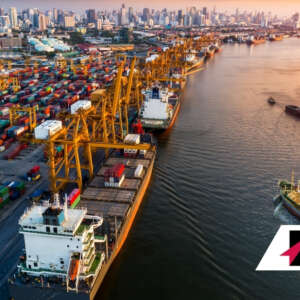The last two and a half years have been a roller coaster ride for the supply chain industry to say the least, with record demand and disruptions through the global supply chain for a variety of reasons. And while many supply chain operations are based on historical demand, none could have predicted some of the events that occurred over the last few years. For this reason, supply chains must be built to be elastic and flexible.
What is an Elastic Supply Chain?
An elastic supply chain is a model that is flexible enough to upscale and downscale according to the market, whatever it might bring. Supply chain operations that are elastic are able to shrink or expand as needed based on what is going on in the market, whether or not it was predicted. During the pandemic, for example, the rush to purchase items like bleach cleaner and toilet paper created a shortage of these items. It is important that companies can expand or reduce capacity as needed in a short period of time, particularly when unexpected events arise.
The goal of elastic logistics is to have a supply chain that is as responsive as possible. Most lean business models rely on controlling waste and cutting expenses while matching inventory requirements. Elastic supply chains meet the characteristics of a lean business, but they concentrate more on flexibility within warehousing and last-mile delivery.
Why Does Your Company Need an Elastic Supply Chain?
Most supply chains experience disruptions when there is not enough capacity. Although retailers and manufacturers set their shipping capacity weeks and months in advance, volatility in the market can create too much or too little capacity. In situations where demand is constantly fluctuating, a fixed approach to capacity planning can be inefficient and expensive. A flexible approach, however, allows a business to let supply chain capacity move as needed.
Benefits of an Elastic Supply Chain
There are several key advantages of having an elastic supply chain:
- – Routes are optimized for better delivery.
- – LTL shipments are maximized.
- – Over-stocking is reduced.
- – Efficiency is increased throughout the chain.
- – Price volatility is diminished.
- – Risk is minimized.
- – Customer service is enhanced.
An elastic supply chain is able to adapt to the extent that perfect order fulfillment is achieved. Improved automation and technology increase perfect order fulfillment metrics which creates a faster and leaner supply chain. Costs are reduced, and delivery to customers is more efficient.
Building an Elastic Supply Chain
In order to build flexibility into the supply chain, the following steps should be employed:
1. Measure capacity. The first step is to measure existing capacity, and then figure out the cost of adding one additional unit to the supply chain.
2. Identify Bottlenecks. Figure out the capacity at each step and what prevented the supply chain from being elastic. For example, is there a time-consuming manual process within the supply chain process that could be made more efficient with automation? If there is something that is preventing flexibility at any level, it should be addressed immediately.
3. Invest in technology. Technology is the main component in elastic logistics. Systems such as a TMS, AI, warehouse automation, and the use of big data and blockchain can greatly cut costs in the long run and increase visibility.
4. Measure Key Performance Indicators. Key performance indicators such as the ability to keep delivery during peaks, the cost of incremental capacity, and the cost of idle capacity should be measured, recorded, and improved on.
5. Scenario Plan. Use scenario planning to prepare solutions for different issues that may arise. There should always be a backup plan when issues arise. This is important because it will keep the supply chain moving when problems come up.
Focus on Flexibility
An elastic supply chain should be able to shift operations no matter what happens in the market. Whether logistics need to scale up or down, an elastic approach allows for the flexible infrastructure to meet changes in demand, even when they are completely unexpected. A flexible supply chain is able to minimize risk and reduce costs while improving services. Red Arrow Logistics can help your business figure out how you can make changes to increase the flexibility in your supply chain and better plan for the future.
Your Trusted Partner
At Red Arrow Logistics, we provide expertise and white glove customer service with fast-growing, complex, and high-value supply chains. As the next-generation model of logistics companies, we offer tailored transportation and logistics solutions — from single shipments to complex over-dimensional and international orders.
Red Arrow offers the scale and scope of services including air, ocean, and ground transportation to meet the budget and schedule requirements of the largest and smallest companies alike. If we can be of assistance, please email us at info@redarrowlogistics.com or give us a call at 425-747-7914.





